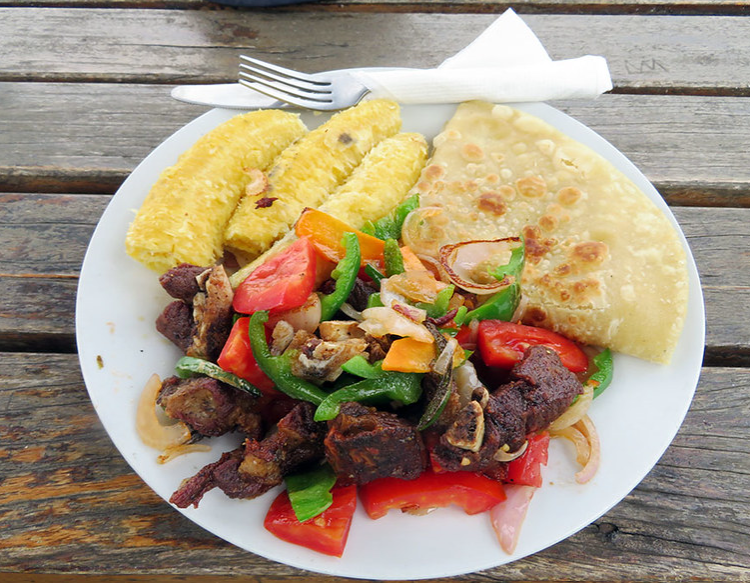Local Dining in Uganda: A Culinary Journey while on a safari through Uganda
Uganda, known as the Pearl of Africa, is not just a land of breathtaking landscapes and incredible wildlife; it is also a treasure trove of culinary delights. Local dining in Uganda offers a rich blend of Flavors, traditions, and experiences that reflect the country’s diverse cultures. From bustling street food markets to serene lakeside restaurants, the Ugandan dining scene is a must-experience for any food lover.
Traditional Ugandan Cuisine
One of the best ways to experience local dining in Uganda is by indulging in traditional Ugandan dishes. These meals are typically hearty, made with fresh ingredients, and deeply rooted in the country’s agricultural heritage. Matoke, a dish made from steamed green bananas, is a staple food in Uganda. It is often served with groundnut sauce, beans, or meat stew. Another popular dish is Luwombo, a delicacy where meat, groundnuts, or mushrooms are steamed in banana leaves, creating a unique and flavourful experience.
Uganda’s local dining experience wouldn’t be complete without tasting Posho, a maize flour dish similar to polenta. Posho is usually paired with beans or a vegetable stew. Chapati, introduced by Indian immigrants, has also become a Favorite in Uganda, often eaten with beans or rolled up with vegetables and eggs to make a tasty street food known as Rolex.
Street Food Culture
Street food is an integral part of local dining in Uganda. As you walk through the streets of Kampala or any major town, you’ll encounter vendors selling an array of mouthwatering treats. Samosas, deep-fried pastries filled with minced meat or vegetables, are a popular snack. Mandazi, a slightly sweet, deep-fried bread, is another street food Favorite, often enjoyed with tea or coffee.
For a more adventurous palate, try Nsenene (grasshoppers) and Nswa (white ants), which are seasonal delicacies enjoyed by many Ugandans. These insects are fried to a crispy texture and are surprisingly delicious. Exploring street food is a great way to immerse yourself in the vibrant local dining culture in Uganda.
Dining in Local Restaurants
Local dining in Uganda is not limited to street food; there are numerous local restaurants where you can enjoy traditional meals in a more formal setting. In cities like Kampala, Jinja, and Entebbe, you’ll find a variety of eateries offering Ugandan cuisine. These restaurants provide an opportunity to experience local dishes with a modern twist or in a more comfortable environment.
One notable spot is 2K Restaurant in Kampala, famous for its authentic Ugandan buffet, offering a wide range of traditional dishes. Pork joints are also popular in Uganda, serving up tender, well-seasoned pork with sides like cassava, avocado, and kachumbari (a fresh tomato and onion salad). Dining in these local restaurants gives you a deeper understanding of the country’s culinary diversity.
The Role of Fresh Produce
A significant aspect of local dining in Uganda is the use of fresh, locally sourced ingredients. Uganda’s fertile soils and favourable climate contribute to the availability of fresh produce year-round. Whether it’s the vegetables in your stew, the fruits in your dessert, or the herbs used for seasoning, you can be sure that your meal is made from the freshest ingredients.
The abundance of fresh produce also extends to the vibrant markets across the country. Visiting a local market, such as Nakasero Market in Kampala, allows you to see the wide variety of fruits, vegetables, and spices used in Ugandan cooking. It’s an experience that connects you to the heart of Uganda’s culinary traditions.
Fusion of Cultures in Ugandan Cuisine
Uganda’s history of trade and migration has led to a fusion of culinary influences from neighbouring countries and beyond. Indian, Arab, and European cuisines have all left their mark on Ugandan food. This blending of Flavors and techniques has enriched the local dining scene, offering a unique gastronomic experience.
For instance, the Pilau rice dish, influenced by Arab cuisine, is a popular choice for special occasions and can be found in many local restaurants. Similarly, Indian-inspired curries and chapatis have become integral to Uganda’s food culture. This fusion of Flavors makes local dining in Uganda a dynamic and evolving experience.
Conclusion
Local dining in Uganda is a journey through the country’s rich cultural tapestry. From traditional dishes like Matoke and Luwombo to street foods like Rolex and Mandazi, every meal tells a story. The use of fresh, local ingredients, combined with the influence of various cultures, creates a diverse and vibrant dining experience. Whether you’re a seasoned traveller or a first-time visitor, exploring local dining in Uganda is an adventure you won’t want to mis



